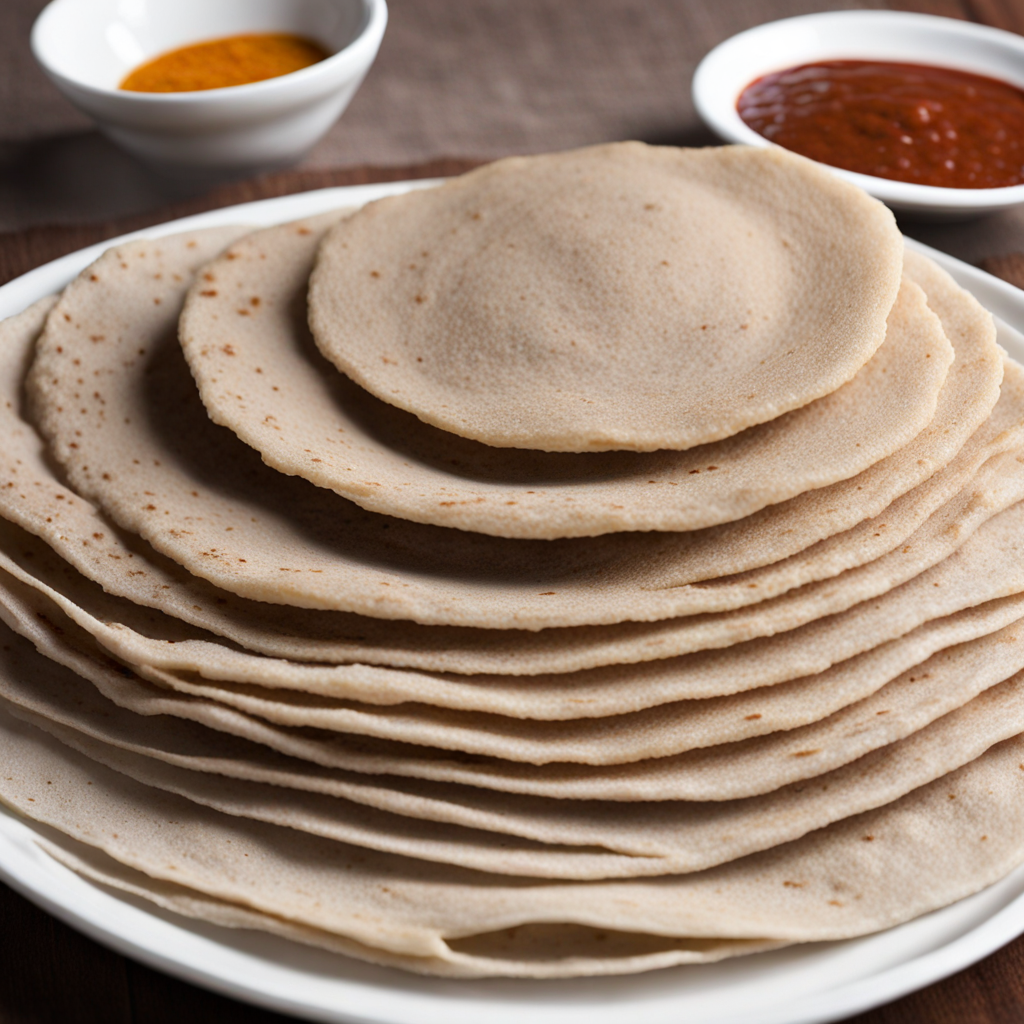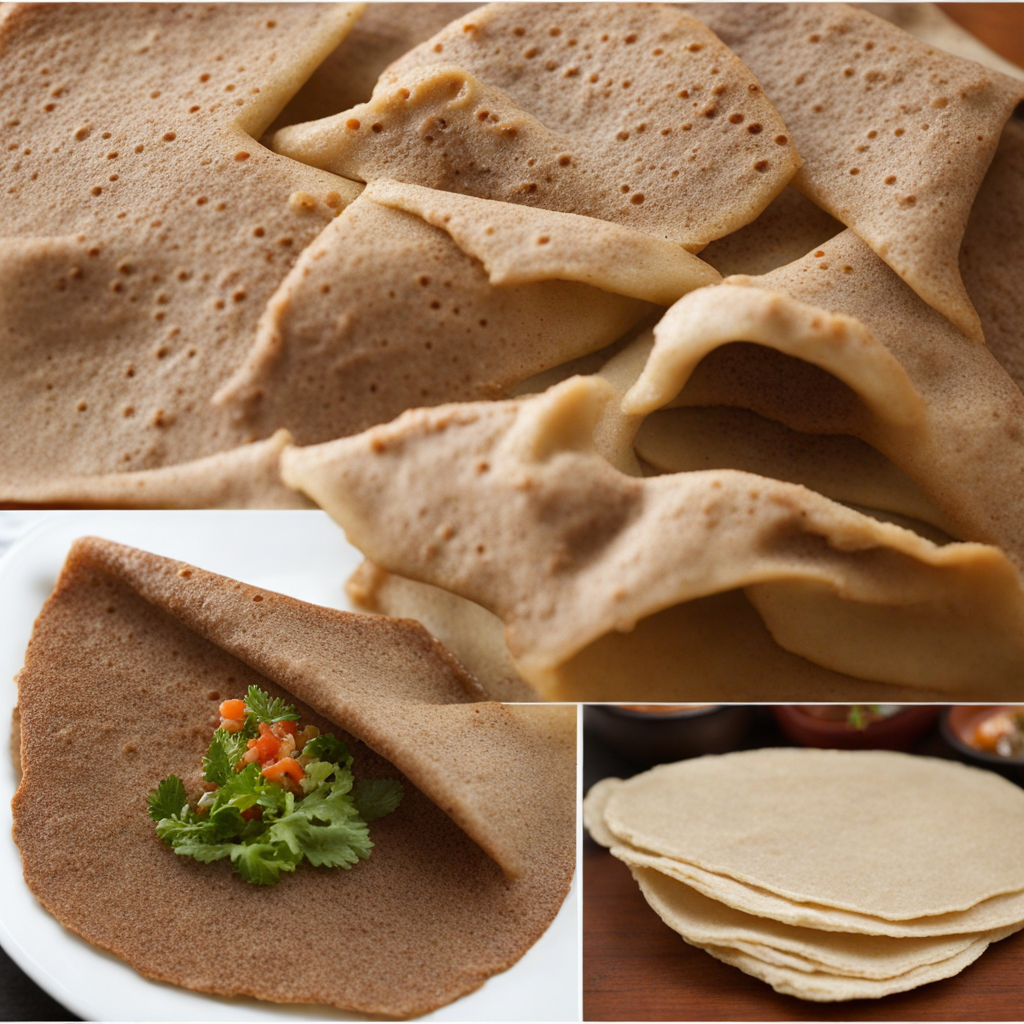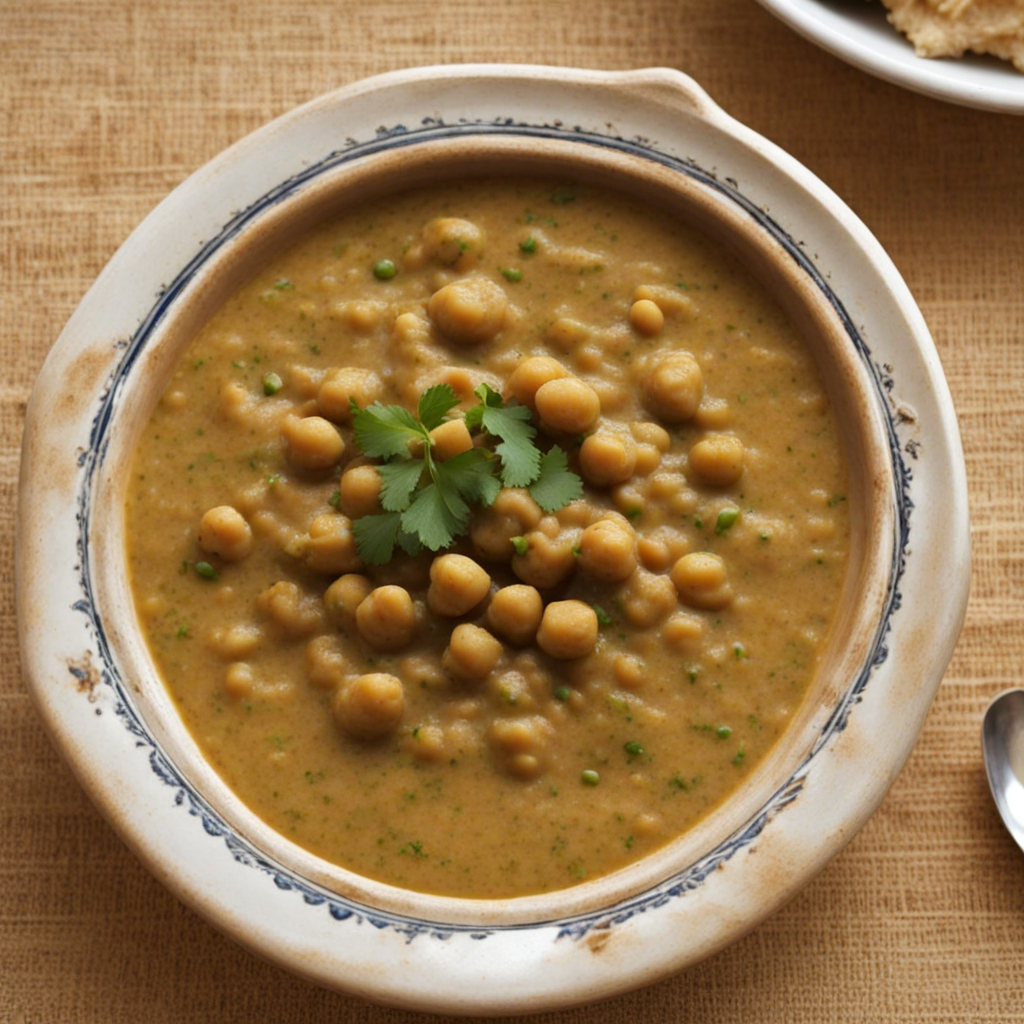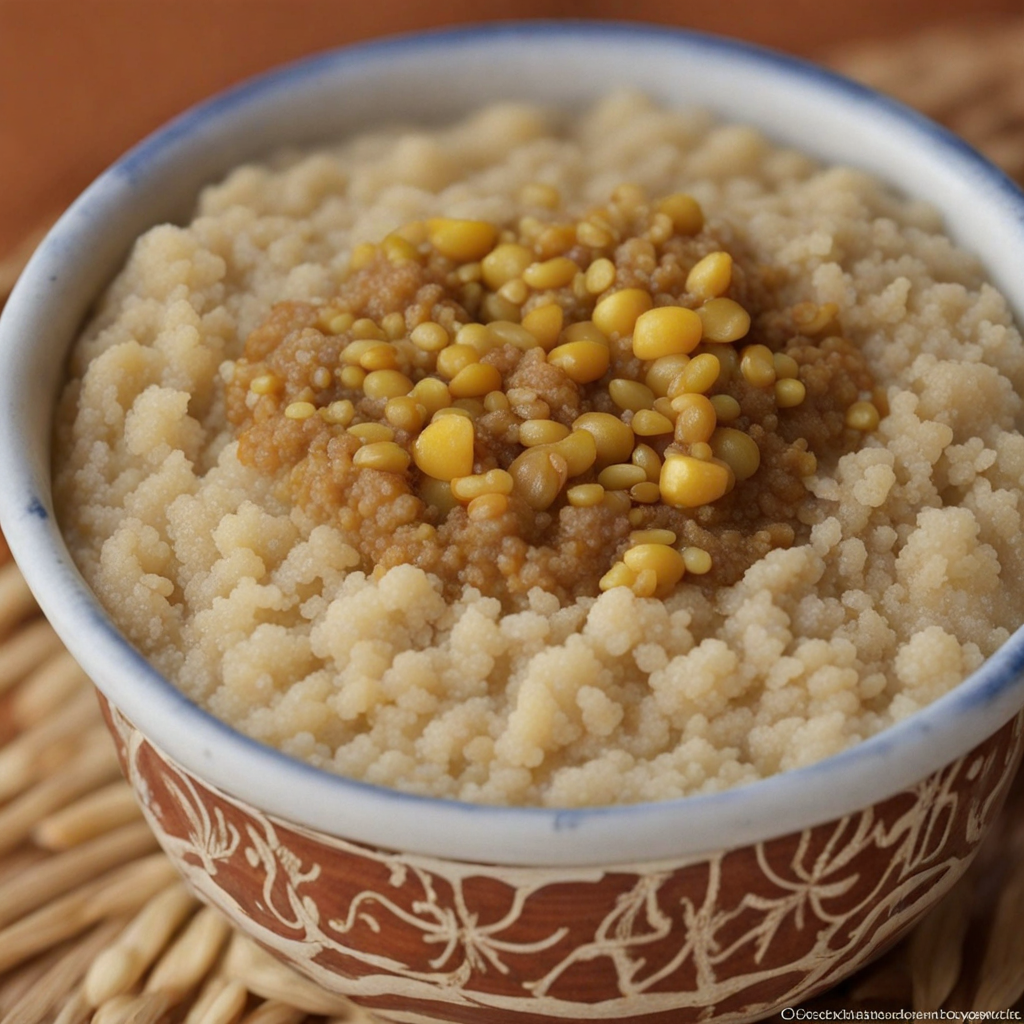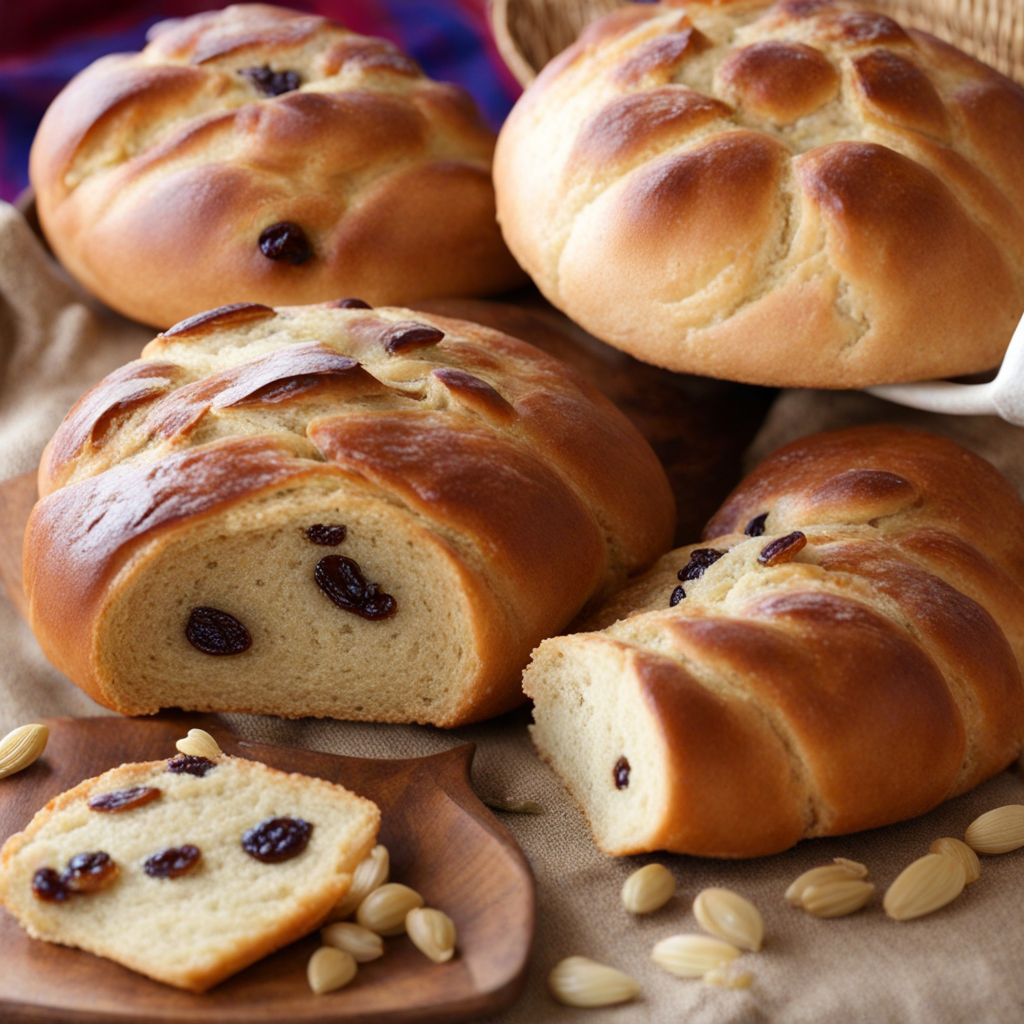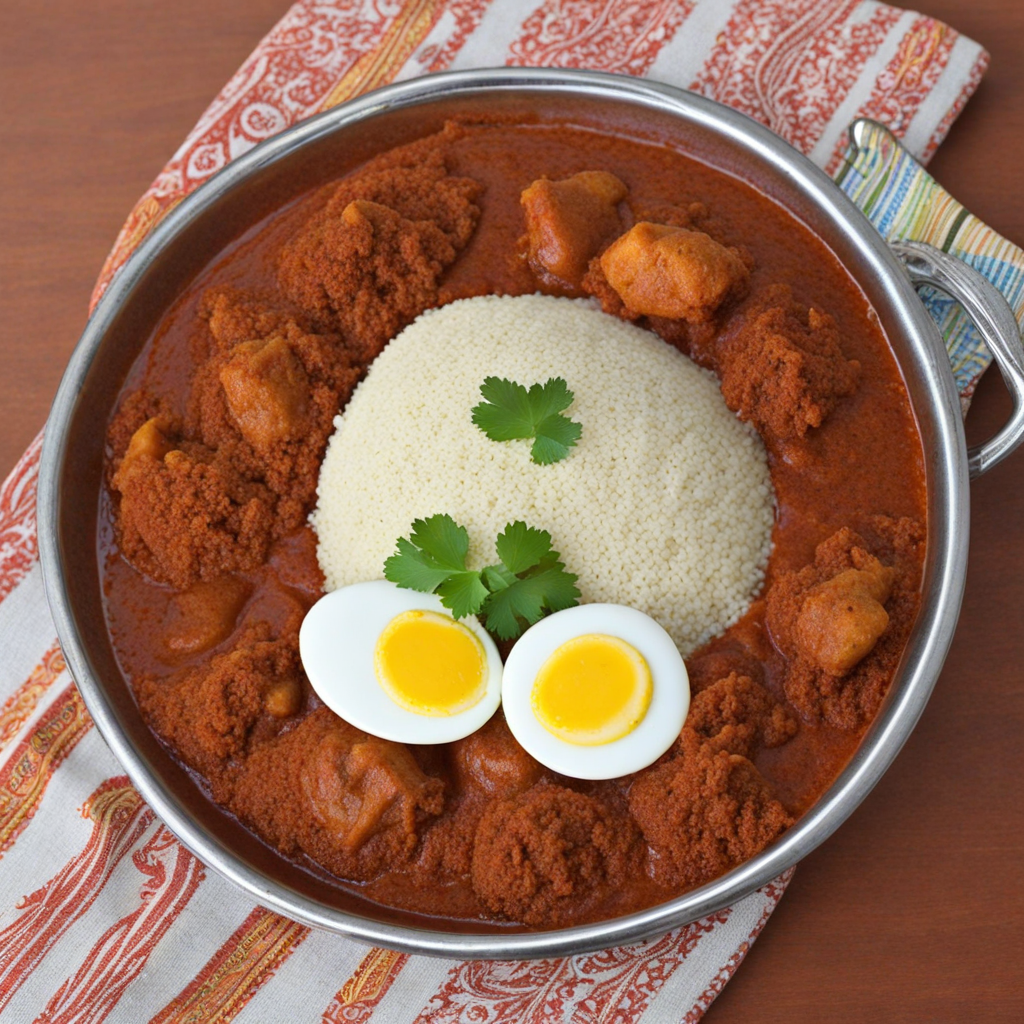Injera
Injera is a unique and captivating staple of Eritrean cuisine, characterized by its spongy texture and slightly sour flavor. Made primarily from teff flour, a gluten-free grain that is highly nutritious, injera is fermented to create a light, airy flatbread that serves as both a dish and a utensil. Its distinctive porous surface allows it to soak up a variety of savory stews and sauces, making every bite a delightful experience. The fermentation process not only contributes to its tangy taste but also enhances its nutritional profile, offering a rich source of protein, fiber, and essential minerals. Traditionally, injera is served on a large communal platter, with an array of colorful stews known as 'tsebhi' arranged on top. These stews can be made from lentils, vegetables, or meats, often infused with spices such as berbere, a fiery blend of chili peppers and aromatic spices. The combination of the soft injera and the bold flavors of the stews creates a harmonious balance that excites the palate. Diners typically tear off pieces of injera to scoop up the stews, fostering a sense of community and togetherness as they share the meal. The experience of enjoying injera is not just about the food; it’s also about the cultural significance it embodies. In Eritrea, injera is often the centerpiece of meals and is associated with celebrations and gatherings, showcasing the rich culinary traditions of the region. The act of sharing injera and the accompanying stews reflects the warmth and hospitality inherent in Eritrean culture. For those eager to explore new flavors, injera offers a delicious journey into the heart of Eritrean dining, inviting food lovers to savor its unique taste and the stories it carries.
How It Became This Dish
The Story of እንጀራ (Injera): A Culinary Journey Through Eritrea In the heart of the Horn of Africa lies Eritrea, a country with a rich tapestry of cultures, languages, and traditions. Among its many culinary treasures, one dish stands out as a staple and a symbol of Eritrean identity: እንጀራ (injera). This sourdough flatbread, with its unique texture and flavor, serves not only as a meal component but also as a cultural touchstone, connecting generations of Eritreans to their history and to one another. Origins of Injera The origins of injera can be traced back over a thousand years, with its roots deeply embedded in the agricultural practices of the region. The primary ingredient in injera is teff (Eragrostis tef), a small, nutrient-dense grain native to Ethiopia and Eritrea. Teff is not only gluten-free but also rich in protein, iron, and calcium, making it a vital part of the Eritrean diet. The use of teff flour in injera highlights the traditional farming practices of the region, where this ancient grain has been cultivated for centuries. Historically, injera's preparation began with the fermentation of teff flour mixed with water. The dough was left to ferment for several days, a process that develops the distinctive tangy flavor characteristic of injera. This fermentation process is critical, as it not only contributes to the unique taste but also enhances the nutritional value of the bread, providing essential probiotics. Injera is believed to have evolved over time, heavily influenced by the culinary practices of neighboring countries, particularly Ethiopia. However, the Eritrean version of injera has its own distinct identity, shaped by local ingredients and traditions. The practice of communal eating, where injera serves as both plate and utensil, reinforces social bonds and reflects the communal nature of Eritrean culture. Cultural Significance In Eritrea, injera is more than just food; it is a vessel of cultural expression and identity. Traditionally, injera is served on a large communal platter, topped with various stews known as 'wat.' These stews can be made from lentils, vegetables, or meats, and are often flavored with berbere, a spice blend that includes chili peppers, garlic, ginger, and various spices. The act of tearing pieces of injera and using them to scoop up the stews is not only a culinary practice but also a social ritual, fostering togetherness and camaraderie. Injera is also a staple at significant cultural and religious celebrations. During holidays, weddings, and family gatherings, it takes center stage, symbolizing abundance and hospitality. The preparation of injera can be a communal activity, with family members coming together to mix, ferment, and cook the bread, further emphasizing its role in fostering community ties. Furthermore, injera plays a significant role in Eritrean identity, particularly in the face of historical challenges. Eritrea gained independence from Ethiopia in 1993 after a long struggle, and food became a potent symbol of national pride and identity. Injera, being a staple of Eritrean cuisine, took on added significance as a representation of cultural resilience. The act of preparing and consuming injera became a way to celebrate Eritrean heritage and distinguish it from that of Ethiopia, despite their shared culinary roots. Development Over Time As Eritrea has evolved over the centuries, so too has injera. The advent of modern technology and globalization has influenced the way injera is prepared and consumed. While traditional methods of fermentation and cooking on a clay griddle called a 'mitad' continue to be practiced, many Eritreans now turn to more accessible methods using electric stoves and non-stick pans. This shift has allowed for greater convenience and efficiency, yet some purists argue that these modern techniques alter the authentic taste and texture of injera. In recent years, there has been a resurgence of interest in traditional Eritrean cuisine, with injera at the forefront. As the Eritrean diaspora has spread across the globe, so too has the popularity of injera. Restaurants serving Eritrean food have begun to appear in cities around the world, allowing people from different backgrounds to experience this unique bread. This global exposure has sparked a renewed appreciation for injera, leading to a fusion of traditional and contemporary culinary practices. The cultural significance of injera has also been highlighted through various food festivals and culinary events, where chefs showcase their skills and creativity in preparing injera and accompanying dishes. These events not only serve to promote Eritrean cuisine but also foster dialogue about food, culture, and identity in a globalized world. Moreover, the health benefits of injera, particularly its high fiber content and low glycemic index, have garnered attention in the context of modern dietary trends. As people increasingly seek out healthier food options, injera has found its place in conversations about nutrition and wellness, further solidifying its relevance in contemporary culinary landscapes. Conclusion Injera is more than just a flatbread; it is a profound symbol of Eritrean identity, culture, and history. From its ancient origins rooted in the fertile lands of the Horn of Africa to its role in fostering community and celebrating resilience, injera encapsulates the essence of Eritrean life. As it continues to evolve in response to changing times and global influences, injera remains a beloved dish that connects Eritreans to their past while paving the way for future generations to savor its unique flavor and rich cultural significance. In a world where food often transcends borders and brings people together, injera stands as a testament to the power of culinary traditions in shaping identities and nurturing communities. Whether enjoyed in a bustling Eritrean restaurant or at a family gathering, injera carries with it the stories, struggles, and triumphs of the Eritrean people, making it a dish worth celebrating for years to come.
You may like
Discover local flavors from Eritrea


